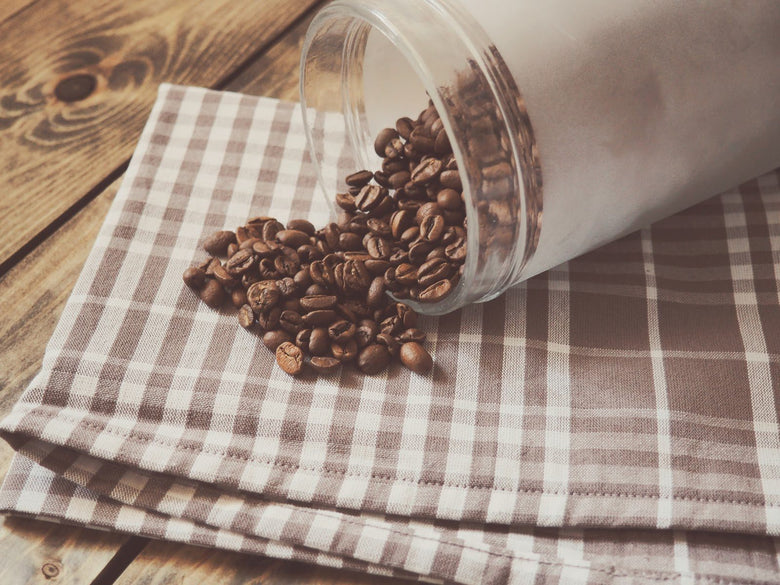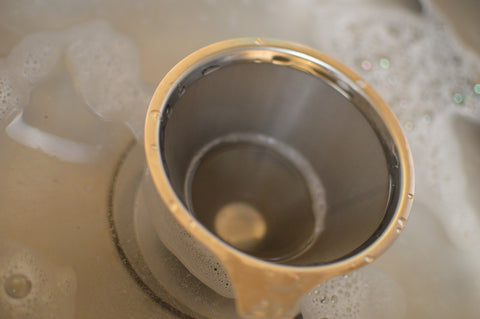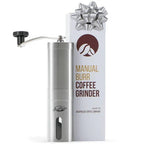Coffee can be ripe with flavor, crisp with acidity, and refreshingly sweet. It can also taste like mud, ash, or burned leather. Yes, those are scientifically-confirmed possible flavors of coffee.
If you want to avoid leathery tasting coffee (trust me, you do), you need to make sure you’re not falling into some bad habits or using low quality ingredients.
I’m going to break down the most likely things to ruin your coffee. There are more than five, but these are some of the biggest, baddest coffee killers out there. If you cannot control these things, no special technique or brewing device will help you.
However, if you are able to eliminate these coffee ruiners and build healthy habits, you’ll have nothing stopping you from brewing rich and delicious coffee.
Read: 5 Ways To Up Your Coffee Game
Lazy Coffee Bean Storage
It all begins with the coffee beans and how they’re stored. If you set your new bag of coffee in the right place, it could remain at peak freshness for two or three weeks. The wrong place, however could bring it to its doom in half the time.
Coffee is an agricultural product that needs to be stored correctly to maintain maximum freshness, just like any other fruit, meat, or cheese.
A Dark Place- X-rays, UV rays, and other unseeable realms of the light spectrum are damaging to foods, including coffee. These are in high concentration with sunlight, but even light from regular lamps can still damage coffee’s flavor. Ideally, you want to store your coffee in an opaque container.
An Airtight Container - Oxygen is the great killer of food freshness. It causes aromatic oils to evaporate, causes coffee cells (and flavor) to collapse, and even provides a setting for microbial life to grow. Store your coffee in a container that you can seal after opening.
A Cool Location - Chemical reactions in food (coffee included) happen more quickly at higher temperatures than lower. Avoid storing your coffee beans in a location that periodically heats up, like next to the oven or a warm window. At the same time, don’t use your fridge or freezer. The cool end of room temperature works well.
If you don’t store your coffee carefully, you’ll kill it before you even get to brew it. For some more specifics on the best ways to store your coffee, check out our Easy Guide To Coffee Bean Storage.
Dirty Coffee Gear
If your brewing gear isn’t clean, your coffee won’t be clean either. You wouldn’t imagine this to be a big deal, but moldy, calcium-coated coffee brewers are very common.
Auto drip brewers are especially notorious for harboring mold in hard-to-clean places. This mold imparts off flavors to coffee and, more importantly, can slowly wear down your immune system. Manual brewers, thanks to their simplicity, usually don’t have the mold problem to worry about.
Calcium buildup is a universal issue. Almost all natural water sources have some calcium, and that calcium builds layers and layers of gunk on coffee equipment. This mutes the nuanced flavors of coffee and destroys any sweetness, so you absolutely want to clean the calcium off every once in awhile.
Read: The Easy Guide To Cleaning Your JavaPresse Pour Over Dripper
Soak your coffee brewer in a vinegar and water mixture for a couple hours, then wash by hand. Doing that every month or two will keep your gear and coffee clean, mold free, and flavorful.
Batch Grinding
Once they’re out of the roaster, whole coffee beans have two or three weeks of peak freshness before they begin to decline rapidly in flavor and quality. Ground coffee only has about 30 minutes.
Read: Why You Should Never Grind All Your Coffee At The Same Time
Like I mentioned in the storage section, oxygen breaks down food. This is a slow process for whole beans, because they have a small amount of surface area and it takes the oxygen a long time to invade all the way to the center. Ground coffee, on the other hand, has a lot of surface area and takes no time at all to infiltrate entirely.
Batch grinding is a sure way to ruin your coffee beans. The aromatic oils will evaporate quickly. The cells will break down and take the flavor with them. There’s no way to bring stale coffee back to life, so don’t let it go stale to begin with.
Instead, you should always grind your coffee just a few minutes before brewing. This preserves the fresh qualities until you’re ready to experience them. I highly suggest you consider buying a hand coffee grinder. They’re affordable and will elevate your coffee quality dramatically!
Really Hard Water
I’m going to talk about calcium in water again because it’s so important. Hard water (water with a high calcium hardness rating) is detrimental to your coffee’s flavor, whether your gear is clean or not. The calcium destroys pleasant and sweet flavors and turns it all into mush.
Hard water generally tastes minerally and unclean. If you’re using water with an odd minerally flavor, that flavor is going to end up in your coffee. As a rule, if you don’t like the way your water tastes, you won’t like it in your coffee.
Coffee is 99% water. So… use good water.
Purified water is better than hard water, but it’s still not ideal. The perfect water for coffee brewing has a TDS (total dissolved solids) reading of about 150ppm. Many spring water sources are close to this level, so if you can find a 3 or 5 gallon jug of that water, that’s the way to go!
At the very least, run any hard water through a filter pitcher. It’s not the best solution, but it helps some.
A Closed Mind
Coffee is an incredible thing. It features a wide variety of flavors, mouthfeel, acidity levels, and aftertastes. The landscape of possibility is vast and worth exploring. But if you have a closed mind, you won’t be able to explore it.
Read: How Manual Coffee Brewing Can Change Your Life
Some folks just don’t care to look for the nuance in fresh coffee. Some folks simply roll their eyes when I say that some coffees can taste like blueberries or have a cane sugar sweetness. These people are missing out on an exciting and rich world.
Be curious, explore, and play. Brew coffee three different ways, find your favorite, and go from there. Buy beans from a region you’ve never tasted before. Try a new coffee brewing method. Learn to taste coffee.
The grand world of coffee is waiting to be explored. Are you up for the adventure?
There you have it: five things that’ll kill your coffee before you even get a chance to brew it. Lock these variables down, and you’ll have little standing in your way on the journey to rich and balanced coffee.



